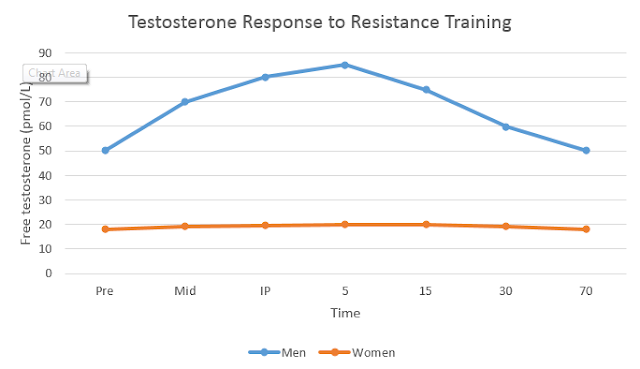Fatigue. Irritability. Muscle weakness. Increased fat mass. Lack of sex drive. All common symptoms of less than optimal levels of testosterone. Though exogenous (not natural) forms of testosterone are fairly easy to acquire and can be beneficial in those with low testosterone, they do come with their share of side effects. Fortunately, there are many lifestyle factors that can also influence testosterone levels.
In this post, we are going to discuss: the basics of testosterone, the effects of resistance training on promoting an optimal testosterone response, and programming considerations for those looking to maximize their production and usage testosterone naturally.
In this post, we are going to discuss: the basics of testosterone, the effects of resistance training on promoting an optimal testosterone response, and programming considerations for those looking to maximize their production and usage testosterone naturally.
The Basics:
What is testosterone?
- Testosterone is part of a group of steroid hormones that has numerous effects in both males and females. It works to regulates libido (sex drive), energy, immune function, muscle development and bone health.
Where is testosterone made?
- In males, testosterone is synthesized (made) in the Leydig cells in the testes. In females, it is made (to a much smaller degree) in the ovaries and adrenal glands.
How is testosterone released?
- It all starts in the brain. When the hypothalamus senses we need more testosterone, it releases GnRH. GnRH leaves the hypothalamus and heads to our pituitary gland. When the pituitary gland receives the message from GnRH, it releases other hormones (LH and FSH) into our blood stream and they make their way to the testes, ovaries, or adrenal glands. There, LH stimulates the leydig cells to convert cholesterol into testosterone (see more about cholesterol and testosterone HERE). Then, testosterone is released into the blood stream to have its affect on its target tissues.
What are the benefits of optimal testosterone levels?
There is an excellent article summarizing the benefits of optimal testosterone levels on artofmanliness.com that you can find here.
Maintaining optimal levels of testosterone leads to...
Maintaining optimal levels of testosterone leads to...
- Increased muscle mass
- Increased strength
- Decreased uptake and storage of fat
- Stronger bones
- Improved libido and erections
- Improved cognition
- Higher levels of energy
How does resistance exercise affect testosterone?
Resistance training affects testosterone response in three main ways
- Resistance exercise stimulates a short-term testosterone release. With more testosterone released in the blood, there is a higher likelihood of interaction with its target tissue which may amplify muscle growth, improve libido, etc.
- Resistance exercise may increase the number of androgen receptors. This is where testosterone actually binds on its target tissue. More receptors increase the likelihood of interaction and having the effects of testosterone carried out.
- Resistance exercise may increase the affinity of androgen receptors for testosterone. This causes the androgen receptors to really want the testosterone to bind to them.
What type of exercise causes the greatest release of testosterone?
- Large muscle group exercises. This includes exercises such as deadlifts, squatting, and bench press. Essentially any resisted movements that require multiple joints and muscles to be used within the lift.
- Heavy resistance. To maximize the testosterone response from exercise, you should use a resistance that is 85-95% of your 1-repetition maximum for the particular exercise.
- Moderate to high volume. Volume is key when maximizing muscle growth and testosterone response. In general, volume of exercise should be moderate to high. This can be achieved with multiple sets, exercises, or both
- Short rest intervals. Traditional strength training typically calls for moderate to longer rest periods, however, according to several studies the greatest testosterone response tends to happen when high intensities are used and rest periods are kept relatively short (30 seconds to 1 minute).
Below is a graph of the response of free testosterone to six sets of squats at 80% of one's one repetition maximum.
Though the total amount of testosterone tends to be higher in younger adults, this study shows similar responses to testosterone with resistance training at any age.
Resistance training is just a piece of the puzzle. Keep a look out for another post soon on other lifestyle factors that affect your testosterone levels.
Disclaimer: While I may have a manly red beard, I am not an expert in testosterone and this information is not intended to treat any medical condition which may be causing low testosterone levels. If you do suffer from symptoms of low testosterone, it would best be treated in consultation with your general physician.
For more information on exercise technique or tips on how to look, move, feel, or perform better contact me at jeff@jeffwilliamspt.com .
Enjoy this post? Share the link to your favorite social media platform!





